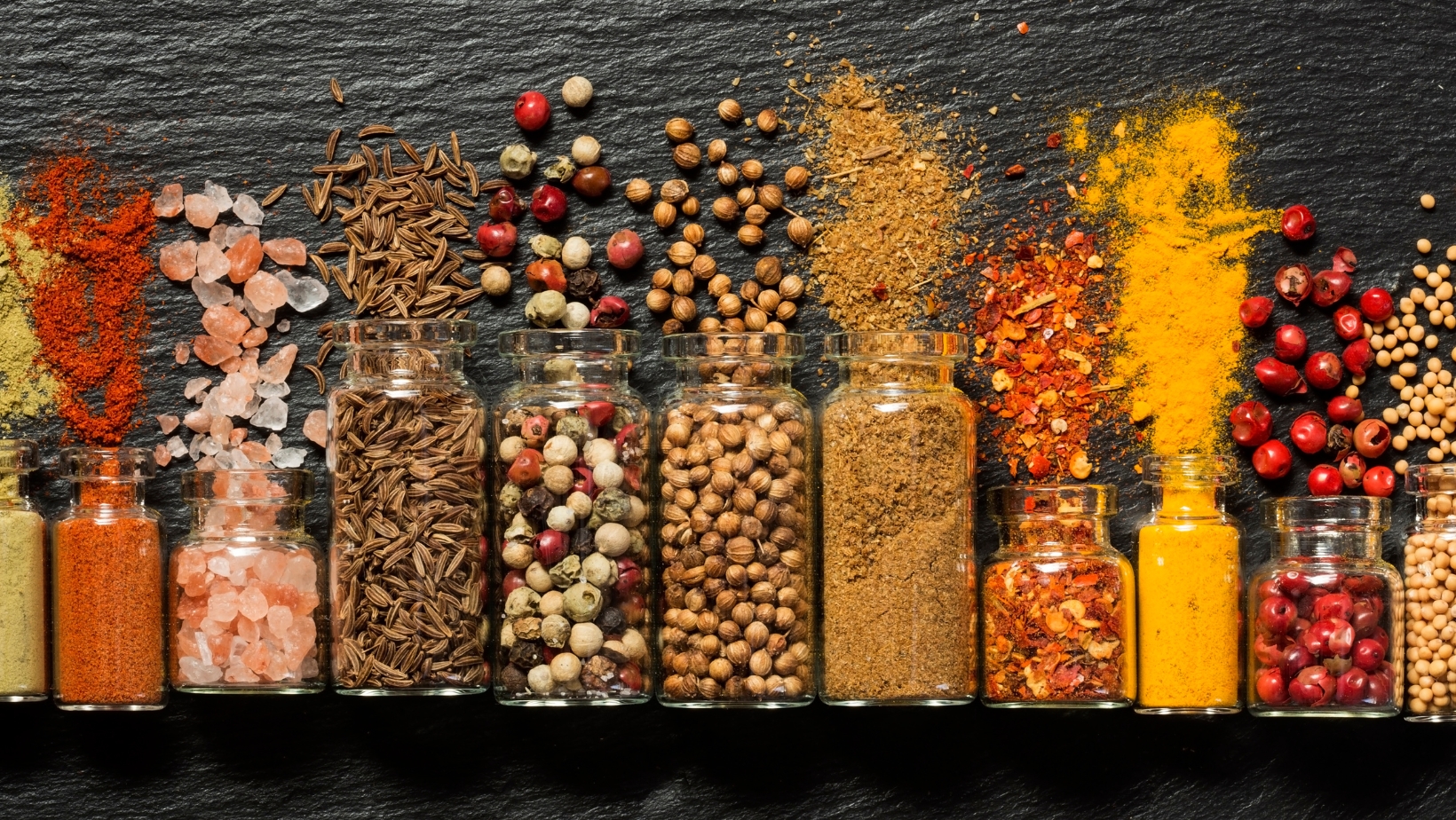Medically reviewed by Dr Chandril Chugh,
Renowned Neurologist and American Trained Specialist
Wow! Spices have incredibly tantalizing tastes. The experience of foods is enriched by the addition of spices, from the searing hot of chilies to the warm, sweet taste of cinnamon, the taste, color, and aroma added by spices are a rich component to our foods. But what about those spices that maybe harbor deadly secrets? Behind that wonderful essence and flavor, in some cases, lay secrets to deadly health problems, including cancer. Let’s go into this very serious topic!
Table of Contents
ToggleWhat Are adulterants or the chemical contaminants?
Adulterants are substances that are added to food products to increase their taste, appearance or weight. Sometimes, they are added to make the product look better, weigh more, or even cost less in production. Some of these adulterants have been proven to be injurious; some contain harmful chemicals like artificial colors, chalk powder, and brick dust etc.

Common Adulterants in Spices
- Artificial Colors Metanil Yellow: This is a synthetic dye and is added most often to turmeric and chili powder to brighten their color. Chronic consumption of metanil yellow inflicts damage on the liver and kidneys and is widely suspected to be a cancer-causing compound.
- Sudan Dyes: They are industrial dyes in use in commodities like shoe polish, motor oils, and other products. They are added illicitly to a spice like chili powder to enhance their color. They are quite hazardous because they pose a danger to humans since they are not fit for human consumption; they are categorized among a group of substances that can cause cancer.
- Chalk Powder: It is mixed with a lot of spices, such as turmeric and chili powder, in order to increase the weight. It is not so toxic, but larger amounts can end up harming the digestive system.
- Brick Dust: At times, this is mixed with chili powder to adulterate it, making it bulkier and a redder shade. Consumption of brick dust brought on severe stomach issues and long-term digestive problems.
- Soapstone: This one is added to powdered spice to increase weight. Soapstone comprises minerals which are toxic if ingested for a long period of time.
- Toxic Chemical • Lead Chromate: This is used to give the bright yellow color to turmeric. Lead chromate is very toxic. Apart from having severe health impacts, it can cause a problem for the nervous system and kidneys. Long-term exposure to lead is also linked to cancer.
- Pesticides: Pesticides can enter spices and by improper washing or processing. Some of the pesticides are carcinogenic, some are capable of causing hormonal imbalance, and some are neurotoxic.
Health Hazards of Adulterants
- Cancer : Some are so toxic, in fact, that they are known to be actual carcinogens: metanil yellow, Sudan dyes, lead chromate. By definition, a carcinogen is any substance that is directly responsible for damaging a cell’s DNA while at the same time changing the organism’s metabolism. Continuous exposure increases the risk of developing cancer, especially in the liver, kidneys, and bladder.
- Damage to Nerves with lead chromate and other heavy metals can lead to severe neurological damage—for example, lead ingestion can lead to developmental delay in children and abysmal consequences, such as severe brain damage and cognitive defects in some children, and other neurological problems in adults.
- Diseases related to digestion: Non-edible adulterants such as chalk powder, brick dust, and soapstone damage the gastric mucosa of the stomach, leading to irritation with nausea, vomiting, and long-term gastrointestinal complaints.
- Damage to the Kidneys and Liver: Most of the chemical adulterants are metabolized by the liver and the kidneys. Prolonged exposure to these chemicals leads to direct damage to the liver and kidneys. For example, chronic exposure to metanil yellow results in dysfunction of the liver and kidneys.
- Hormonal Side effects: Some of those herbicides pass into the spices that are likely to be contaminated, causing interference to the human endocrine system, leading to hormonal imbalance, which affects growth, metabolism, and reproductive health.
How Adulterants Can Be Detected
The following are some easy home-based tests to identify adulteration in spices:
- Turmeric Test • In a glass of warm water, put a teaspoon of turmeric. • Leave for few minutes. • Pure turmeric will subside at the bottom, while the adulterated one will leave the water colored or cloudy.
- Chili Powder Test • Put a teaspoon of chili powder aside from a glass of water. • The pure chili powder will float mostly in water, while the adulterated powder will start settling down quickly in water.
- Test for Sugar • Put a spoon of sugar in a glass of water. • If turned milky, there is a possibility that it contains chalk powder.
How to Protect Yourself
Since we already know about these dangerous adulterants, what are we going to do to protect ourselves and our families? Some tips will help guide you on how to stay safe:
- Buy from Known Brands Purchases of reputed brands of exotic spices can help minimize the danger of contact with adulterants. Such brands usually check the quality more stringently and are not likely to use dangerous additives.
- Check for Industry Certifications Find certification on the packaging of spices, for example, organic or a food safety certification. Such certifications would mean the product is tested up to certain safety standards.
- Fresh Spices Always/ use whole spices; it is better to get them ground at home when possible. Whole spices are less likely to be adulterated. You can have them ground at home using a spice grinder or a mortar and pestle.
- The Water Test As for testing adulterants in spices, some of these testing procedures are usually done in the house, for instance, in the case of turmeric testing for metanil yellow. Dissolve a teaspoon in a glass of water. The water becoming cloudy is an indication that turmeric could be adulterated; pure turmeric settles at the bottom of the glass, leaving the water clear.
- Learn Do not be aware and informed on matters of food safety. There is a lot of information available on websites and other resources to make you know more about adulterants and how to avoid them. Remember, knowledge is power.

The Role of Authorities
The governments and food safety authorities are in fact required to ensure we do not get exposed to adulterated spices. For it is they who lay down the regulations and standards that our food supply should adhere to in terms of sanitation and wholesomeness. Here is what they do:
- Regular Inspections Regular visits are also made by the authorities to ensure that food processing facilities are compliant with standards. This provides one way to be able to detect and stop the use of adulterants.
- Public Sensitization Campaigns There is awareness of certain public campaigns that are carried out by the government and organizations with special interests in educating people on the side effects of adulterants. This can infer to us campaigns that can be made by making better decisions during a purchase of food.
- Imposing strict penalties for such users, who adulterate the food, can lessen the practice of harming. Companies found guilty of food adulteration can face big fines and even shutdowns.
Summary
We may add a variety of spices to bring out the great flavors and tastes of our food, but we should know that they, too, could bring hidden dangers. The adulterants in the spices might be dangerous and harmful enough to have a link with cancer. Buying from reputed brands, checking for the certifications, using natural spices, and getting informed are ways one can shield oneself and the loved ones from the perils these adulterants harbor. Just make wise choices as you prepare those delicately seasoned, spice-filled meals, knowing that our health is in our hands.

This article is medically reviewed by Dr. Chandril Chugh, Board-Certified Neurologist, providing expert insights and reliable health information.
Dr. Chandril Chugh is a U.S.-trained neurologist with over a decade of experience. Known for his compassionate care, he specializes in treating neurological conditions such as migraines, epilepsy, and Parkinson’s disease. Dr. Chugh is highly regarded for his patient-centered approach and dedication to providing personalized care.








